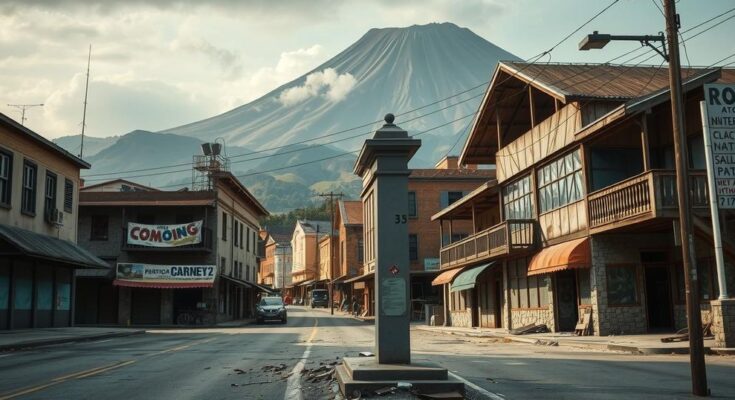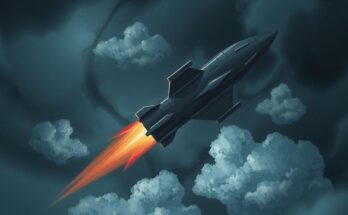Goma, DR Congo, remains in turmoil following the M23’s control, disrupting life for over two million residents. Heavy fighting has led to thousands of casualties and displacements. With violence ongoing and humanitarian crises worsening, the community faces unprecedented challenges amidst a landscape marked by the scars of war.
GOMA, DR Congo, May 14 (Xinhua) — The city of Goma, once a lively border town beneath the towering Mount Nyiragongo, now faces a disheartening quiet after the March 23 Movement (M23) rebel group gained control of the region just over three months ago. Daily life has significantly deteriorated, with peace still an elusive dream for its more than two million residents.
Since January 27, when the M23 made decisive moves into Goma, the effects of conflict have become painfully familiar to many. This takeover has drawn comparisons to 2012 when Goma was momentarily under the same rebel group’s rule. The resurgence of fighting has transformed Goma into a battleground, with shells frequently striking homes, hospitals, and crucial infrastructure such as the airport. Government sources report that over 8,500 individuals have lost their lives, with nearly 5,600 sustaining injuries, including many in displacement camps, which were also tragically affected.
Following heavy fighting, M23 declared a “humanitarian ceasefire” on February 4. However, skirmishes persist in North and South Kivu provinces. The insurgents have now captured Bukavu, the capital of South Kivu, and are consolidating their positions in the region. Local analysts fear the current conflict might settle deeper into the fabric of chaos rather than resolve. Corneille Nangaa, the former electoral chief and now a prominent voice of the M23’s political arm, has asserted a goal to “liberate the entire country.”
In the wake of M23’s control, Goma’s atmosphere has shifted dramatically from the once vibrant commerce to a stark stillness. Commercial districts lie largely abandoned as the banking system teeters on the brink of collapse amidst cash shortages. The resulting increase in crime, especially at night, has left many residents fearful. Absence of governmental authority has allowed M23 to establish their own checkpoints, imposing arbitrary taxes and tolls on residents.
The humanitarian crisis has escalated rapidly, with the International Organization for Migration estimating an additional 1.2 million people displaced in the Kivu provinces since January. Those who sought refuge in Goma have found themselves fleeing yet again, most recently due to a drastic M23 ultimatum issued in early February, which resulted in the almost overnight abandonment of major displacement camps like Bulengo and Lushagala.
Sake, located about 27 kilometers from Goma, has been a site of fierce battles between M23 and Congolese forces assisted by local militias. The street-by-street fighting has left significant destruction in its wake. Residents have been forced to confront perilous remnants of war, such as unexploded ordnance scattered about. Christian Kabuya, a local resident, stated, “We have found live shells in over ten locations; several children have died due to accidental explosions.”
Ndosho Hospital, the sole facility in western Goma still attending to wounded patients, struggles under mounting pressure. Supported by the International Committee of the Red Cross (ICRC), medical staff there face unprecedented challenges. “The situation here is uniquely complex,” commented Taoffic Mohamed Toure, an ICRC veteran who has witnessed similar situations across conflict zones. “The multitude of combatants and the ongoing violence make this region one of the most difficult places for our operations.”
As diplomatic initiatives falter and ceasefires crumble, the persistent shadows of conflict loom over eastern DRC. In Goma, where once cooling lava from Mount Nyiragongo formed solid rock, deep scars left by grievances of war remain raw and unhealed.
The city of Goma, under the tense control of the M23, reflects a troubled landscape where violence and displacement have wreaked havoc on communities. With increasing crime rates, a collapsing banking system, and humanitarian crises deepening, the impact of conflict is glaringly apparent. As hopes for peace diminish, Goma and its residents continue to grapple with the traumas of war that refuse to fade.
Original Source: english.news.cn




